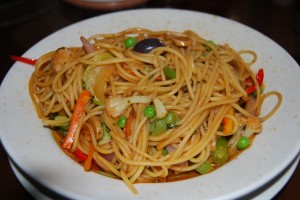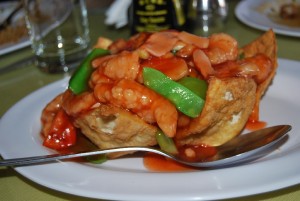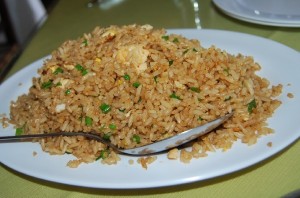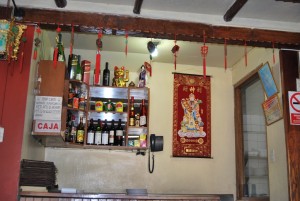A Culinary Revolution in Peru?

In a recent interview, Fernan Adrià, the famous chef and creator of the great restaurant El Bulli, said he wanted to find out what was that something more that made Peruvian cuisine so unique. He came to Peru to be part of the annual gastronomic festival Mistura, held in Lima, visited the Pachacútec culinary Institute, and traveled to Iquitos and Cuzco as part of filming a documentary. Now back in Catalonia, Adriá received a phone call from food writer Catherine Contreras of Peru´s El Comercio newspaper which asked him if he had found an answer to his question.
Ever the acute observer Adrià said that it would be foolhardy to think that in just a couple of weeks he could figure out the secret of Peruvian cuisine. But despite his humility, as the interview continued he made an intriguing observation.
When one thinks of the secret of Peruvian cooking, one might be tempted–as so many are–to attribute it to the country’s ethnic and geographic diversity that, since the entire country lies in the tropics, gives it an unusual variety of ingredients and historical influences from which to work.
While an important idea, nevertheless this fails to take into account the other Andean nations that have similar geographies and similar histories. To be sure, no other country has the coastal desert of Peru, at least not where there the national government and population is centered, but there is a deep similarity among the countries.
Generally, the nationalists forget that and, as a result, end up in unfortunate sniping with their neighbors over who can claim what legitimately.

But Adrià takes a different tack.
There is something unbelievable in Peru; that for a child Japanese and Chinese food are normal. In Spain this doesn’t happen. And then, for Peru that it is normal for traditional cuisine to incorporate Nikkei and Chinese cooking, damn, this is very different.
I am trying to explain all this to myself. That I could go to a Chinese restaurant and find Peruvian recipes, well I don’t understand anything. This makes you rethink everything. It is magic. We can say that this cosmopolitan component of incorporating cuisines from such different origins is unique in the world. When contextualized, and the fifty or seventy thousand culinary institute students in Peru know this, it is a revolution.

Of course, it is useful to remember that people attribute to Adrià a culinary revolution. With his attention to detail and hard work in a kitchen that became a kind of laboratory Adrià was able to push the technical boundaries of cooking. By using his kitchen, not only as the basis of his justifiably famous restaurant, but to train chefs from all over the world, Adrià changed formal cooking. He is now seeing a culinary revolution in the works in Peru.
If not understood fully, Adrià’s comment might seem like the ordinary, bland reference to Peru’s history of ethnic and racial mixing, called “mestizaje.” But though much cited, and hence a commonplace, this mestizaje is not capable of containing Adrià’s meaning.
It is not revolutionary. In fact it is found throughout the length and breadth of Latin America where it also impacts cuisines. Rather there is something specific in Peru.
Adriá does not refer to any ordinary mixing, but to the idea that specifically Asian food, Chinese and Peruvian-born Japanese, should be ordinary, unmarked, to a Peruvian child, no different from any other ordinary cooking at home or on the street.
Though Adrià indirectly mentions chifas, Peruvian-style Chinese restaurants, for the ways they are Peruvianized. Chifa is not the same as Chinese food in China and it is one of the most popular foods in Peru. Peruvians love to go for chifa.

But it is marked as chifa and not as ordinary. Though its recipes are Peruvian, the food still is not ordinary, though one of its dishes–arroz chaufa (fried rice) is. It is the ordinariness that is the requirement if we wish to understand Adrià.
And, many dishes that originated with Peru’s Chinese community and its descendents are ordinary. Besides arroz chaufa, we have the ubiquitous lomo saltado (stir-fried beef) and pollo saltado (stir-fried chicken), as well as tallarin saltado (stir fried noodles) with different meats. These are truly daily fare form almost all Peruvians. And, with their accompanying techinques have made the transition across the ethnic barrier as did so many Chinese Peruvians, although chifa has not and still remains markedly Chinese, if Chinese Peruvian.
As a result, one must ask the question of what enabled this food to cross the barrier, along with so many descendents of Chinese Peruvians, while chifa still maintains that allure of the other, even if a very domestic other.

For now, we can only point to two factors.
First, dishes such as the various saltados and the arroz chaufa where present when Peru’s mass, urban culture was formed and were well posed to become widespread and canonical, initially as street food and later as domestic eating.
Second, the two sidedness of Peru’s Chinese community–both highly integrated and acculturated to the extent it disappears in the mass of urban Peruvians at the same time it is marked as other with symbolic Chinatowns and restaurants– is unusual and uniquely Peruvian. No where else, according to historians, was the Chinese population so able to merge with the local population, while at the same time pressures to maintain the symbol of China and refresh it with new immigration kept chifa distinctive, although Peruvian.
In these two social realities lies the distinctiveness. And they are unique historically, but Adriá seems to think that on their foundation a new revolution is being built which will continue what they did and normalize even further Chinese, and now Japanese food and techniques into a mainstream that lives new social realities.

Certainly there is much change afoot in Peruvian cuisine and in Peruvian society. To the degree the culinary institutes and their host society are on the same page a culinary and social revolution might well be in its beginning stages in Peru.
Not one from Adrià or any other chef’s laboratory, this one will be about a society that has decided to push the envelope on its cooking while building from the heritage that it has in a combination of culinary institutes, elites, and the ordinary process of social change as common people eat.




